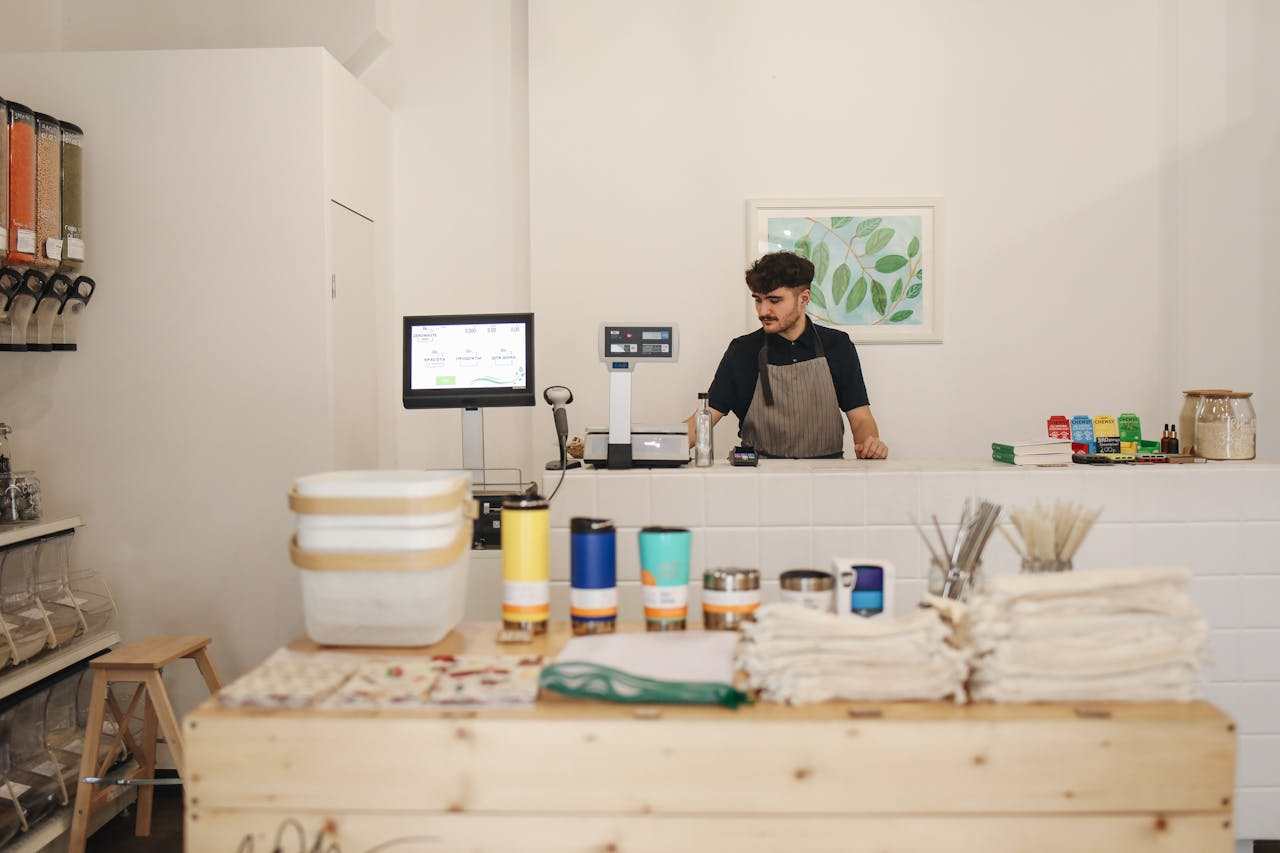Designing a retail store is about creating an experience. Every aspect, from the layout to the colors, influences how customers interact with your brand. A well-designed store encourages shoppers to stay longer, explore, and buy. Think about a store that caught your attention. Was it the displays, the lighting, or the placement of the products? The look and feel of a store can significantly impact customer behavior, forming a strong connection between the product and the shopper.
To create an attractive store design, break down the components and make thoughtful choices that appeal to your target audience. From selecting furniture to using technology, every choice shapes the shopping experience.
Let’s examine how to design a stylish retail store that consistently attracts customers.

Visual Merchandising
Visual merchandising is a key part of retail design. It means arranging products to attract attention and boost sales. Good displays guide customers through your store and encourage exploration. Create eye-catching displays with a clear theme, whether it’s seasonal, promotional, or lifestyle-based, to inspire shoppers.
Storytelling is also important in visual merchandising. Each display should connect to your brand’s identity while showcasing products. Use props and signs to enhance the story, making products feel like essential parts of a lifestyle customers want.
Technology Integration
Using technology is essential in today’s retail market. Digital signage can add energy to your store design, enabling quick updates and enhancing customer interaction. Use digital displays to promote sales, share product details, or tell your brand story. This tool keeps your store fresh and offers an engaging shopping experience for customers.
Digital signage software can easily adapt to changing campaigns, making it simple to switch messages for different seasons, times of day, or customer groups. With eye-catching animations and bright images, these displays grab customers’ attention and help them connect with your brand.
Colour Palette
Color can affect mood and behavior. Choose a color palette that sets the right atmosphere. Warm colors, such as red and yellow, energize shoppers, while cool colors, like blue and green, evoke a sense of calmness. Consider your brand’s personality when selecting these colors.
Use bold colors for accents against neutral backgrounds to keep the space open and inviting while highlighting key items. Color is a powerful tool, so use it wisely to enhance your store’s look and feel.
Lighting Fixtures
Lighting is essential for creating atmosphere and guiding customers through your store. Different areas may need different lighting. Bright lighting can highlight product displays, while softer lighting can make a cozy feel in fitting rooms or lounge areas.
Layer your lighting for depth and interest. Combine ambient lighting for overall brightness, task lighting for specific areas, and accent lighting to highlight special displays. This approach can make your store visually appealing and improve the shopping experience.
Floor Plan
A well-designed floor plan helps customers navigate your store easily and maximizes the use of space. Consider how shoppers will navigate through different sections. A smart layout invites customers to explore while helping them find what they need.
Place popular items at the back to guide customers through various displays. Use wide aisles to prevent crowding and ensure accessibility. Design flexibility is also important, allowing for changes to accommodate seasonal themes or new inventory.
Furniture and Fixtures
Choosing the right furniture and fixtures is key for both function and style. Your choices should match your store’s look and theme. Consider custom pieces that showcase your brand or flexible fixtures that can be adapted to different displays.
Additionally, prioritize comfort and usability. Seating areas can encourage customers to relax and stay longer, thereby increasing customer satisfaction and loyalty. Tables and shelves should be practical and visually appealing, displaying products effectively while maintaining a consistent appearance.
Sustainability Practices
Many customers prefer brands that prioritize sustainability. Using eco-friendly materials and methods in your store design can attract environmentally conscious shoppers. Consider using reclaimed wood for fixtures, energy-efficient lighting, and natural paint to create a stylish and eco-friendly retail space.
Show your commitment to sustainability with visuals in-store, such as displays that explain your eco-friendly practices. This transparency can attract customers who value your efforts in both style and environmental sustainability.